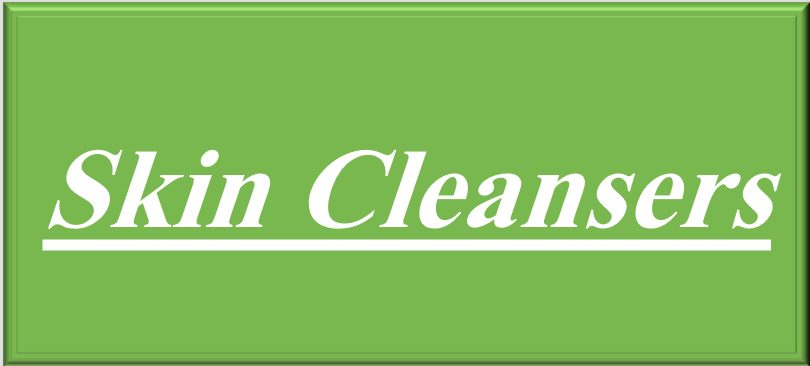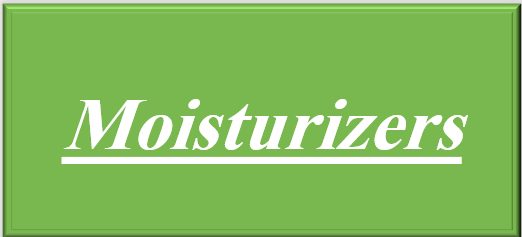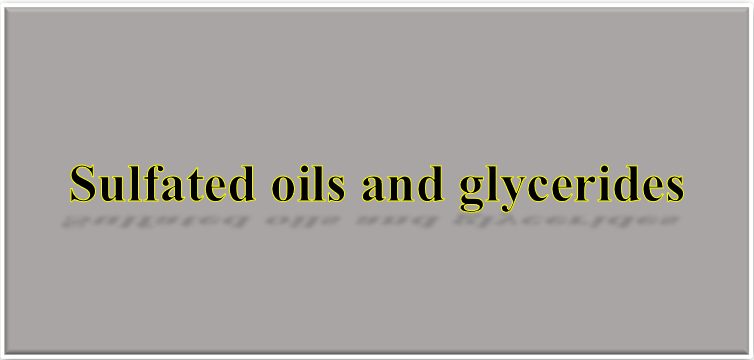Skin cleansers constitute an important segment of the skin-care market. Cosmetic chemists are usually involved in the formulation of facial cleansers in forms other than bars. Various product types have different functions and, while they have advantages for a specific condition or soil, none is universal. Most consumers use more than one type of cleanser, so an understanding not only of chemistry and formulation, but also of consumer usage patterns for their needs in a specific market or market segment, is key. When classifying cleansers, the various soils on the skin must be considered. Soils come from a variety of sources, but can be classified broadly as oil-soluble, water-soluble and insoluble. Sources for oil-soluble soils can be sebum, residue from moisturizers, or waterproof make-ups. Water-soluble materials may also be residue from make-up or moisturizers, soluble skin soils, and soluble grime. Insoluble materials are represented by dead cellular matter, make-up pigments or, in hard-water areas, precipitated metallic soaps.
Anhydrous oily cleansers
The first category of cleansers is the most oleophilic group. Mineral oil, petroleum jelly, vegetable oils and esters are useful as non-drying skin cleansers for removal of waterproof make-up and oil-soluble soils. The disadvantage of these cleansers is that they are not readily rinsible and often have poor cosmetic and esthetic characteristics. More modern versions incorporate moderate to high levels of esters or gentle oil-soluble surfactant materials to make the products less greasy, more pleasant and, in some cases, rinsible. In addition, some formulations are thickened to form gels, which are easier to spread onto the skin and can be tissued off.
Water-in-oil emulsions: cold creams
The next category of products are water-in-oil (W/O) emulsion cream and lotion formulas, typified by cold cream. Cold creams are referred to as W/O emulsions but, during processing and usage, are more complex water-in-oil-in-water (W/O/W) emulsions, or mixed emulsions. The partial or mixed external oil phase of these mineral oil/beeswax/borax systems dissolve oil-soluble materials and, because of the oily external phase and the beeswax/ borax soap at the interface, they are able to solubilize, wet out and transport soil and waterproof make-up. Cold creams are generally not rinsible, are considered greasy and inelegant, and are tissued off the skin. They leave behind a film that has proven moisturizing characteristics. Classical cold cream formulas set the standard for mildness to skin and eyes. In recent years, some rinsible cold creams have emerged. These are cold cream and similar bases to which non-ionic emulsifiers have been added with an increased water phase. These rinsible systems then become oil-in-water (O/W) emulsions. They are not as satisfactory for waterproof mak-eup removal, but are rinsible and more cosmetically elegant.
Oil-in-water emulsions: cleansing milks
Non-foaming O/W emulsions with greater than 50% water phase typify the next category of cleansers. These products are typically referred to as cosmetic milks. The primary cleanser and emulsifier is often a TEA/fatty acid soap, or a detergent such as sodium cocoyl isethionate supplemented by anionic or non-ionic emulsifiers. Cosmetic milks are skin-friendly and have many similarities with O/W moisturizing lotions. However, they differ from moisturizing lotions in that they generally have less water in the water phase, excess TEA fatty acid, and higher levels of a secondary emulsifier such as self-emulsifying glycerol monosterate. Significant levels of mineral oils or esters may also be incorporated to ensure adequate levels of solubilization of oily materials without reducing rinsibility.
Fatted mild syndet foaming bars and cleansers
The next category is differentiated because of a foaming characteristic. This is the category of fatted syndet bars and gentle fatted foaming pastes and lotions. These products have good wetting properties but, are significantly more gentle than fatted soaps, detergent solutions or non-fatted soaps. They occur as bars fatted sodium coco isethionate, as pastes based on fatted built monoalkyl fosfates, and as pastes and lotions based on fatted and built sodium coco isethionate.
Recent additions to this range of gentle foaming cleansers have been lotions based on sarcosinate surfactants, with high levels of glycerol, protein, and fatty materials to ensure a mild effect. Due to their gentle nature on the skin, mild bars, foaming pastes, and lotions are becoming more important on a worldwide basis.
Superfatted bar soaps
Fatted bar soaps have greater cleansing characteristics, with less skin residue than fatted and built-mild detergent pastes and lotions. The formulations contain varying amounts of fatty acids or other fatty or moisturizing materials to decrease their aggressive behavior on the skin. This results in a non-taut skin feel upon rinsing, and less damage to the skin.
Astringents/toners
Astringents and toners are a class of skin cleansers that have a special use and very specific formulations. They are hydroalcoholic solutions with an alcohol content of 20-70%. The products with lower levels of alcohol are developed for sensitive skin, while those with higher amounts are for oily skin. Astringents and toners often contain small amounts of emollients or humectants to decrease their defatting of the skin. Oily-skinned consumers or teenagers generally use them as a supplement for cleansing and acne treatment. They are often the last cleansing step in a ritual to make the skin very clean in preparation for the use of a moisturizer.
Bar soaps
The final category consists of the minimally fatted or non-fatted bar soaps. These coco/tallow soaps are excellent cleansers, but can, if used excessively, irritate the skin. They enjoy considerable usage among consumers as part of an everyday cleansing ritual and, on a worldwide basis, are the most commonly used cleanser product.
Particulate scrubs
A specialty category is the scrub creams, which contain particulate materials. These products are often O/W emulsions (if non-foaming) or gentle pastes (if foaming). They contain particles of polyethylene or other inert materials such as ground seed husks. The purpose of these particulate materials is to remove loose flakes of stratum corneum and to polish the skin. The use of particulate scrubs can be helpful if there is a need to remove a layer of stratum corneum. However, excessive use should be cautioned as, due to their mechanical action, they can be irritating.
The selection of cleansers and their constituents requires extensive testing to ensure suitability for use. The goal should be to remove soils and make-up with minimal damage to the skin.
References:
- Lukacovic, M.F. et al. (1988) Forearm wash test to evaluate the clinical mildness of cleansing products. J. Soc. Cosmet. Chem. 39 355-366.
- US Phamacopea XXI (1970) Mack Publishing Co., Easton, PA, p. 143.
- US Patents 2, 894, 912; 3, 376, 229; 3, 394, 155; 3,420,858.
- US Patents 4, 132,679; 4, 139,485; 4, 369, 134; 4, 536, 519; 4, 758, 376.
- Bettley, F.R. (1960) Some effects of soap on the skin. Brit. Med. J. 5187 1675-1679.
- Williams, D.F and Schmitt, W.H (1996) Chemistry and Technology of the Cosmetics and Toiletries Industry.
- Prottey, e. et al. (1972) The effect of soap upon certain aspects of skin biochemistry. J. Soc. Cosmet. Chem. 24 472-492.
- Loden, M. and Bengtsson, A. (1990) Mechanical removal of the superficial portion of the stratum corneum by a scrub cream: methods for the objective assessment of the effects. J. Soc. Cosmet. Chem. 41111-/21.
- Komp, B. (1987) Skin compatibility tests-Importance in skin cleansing product development. Cosmet. Toilet. 102 89-98.








